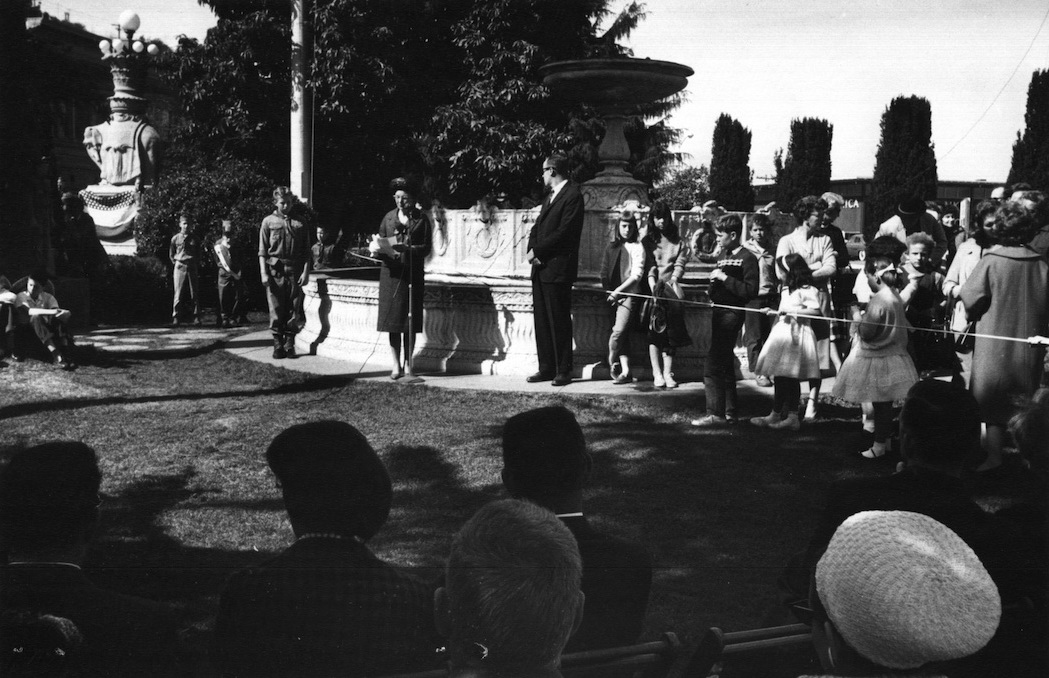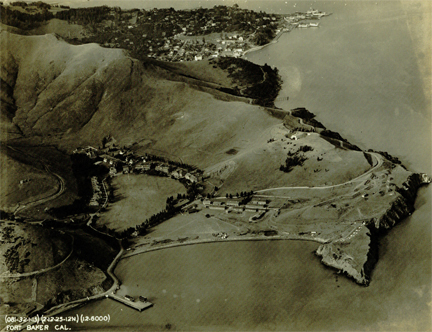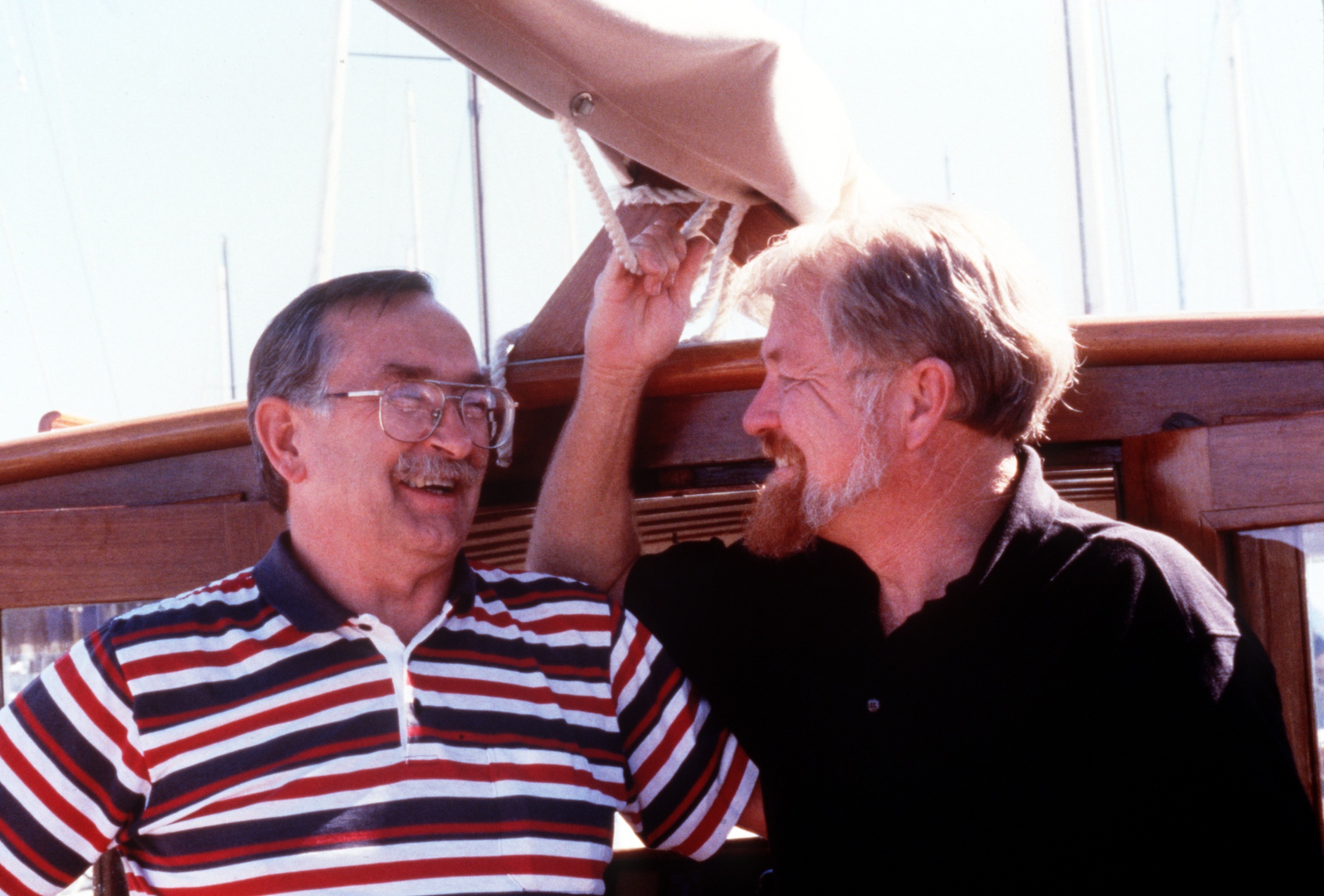History of the Sausalito/Viña del Mar Sister City Relationship
 Monday, July 25, 2011 at 08:22PM
Monday, July 25, 2011 at 08:22PM
Note: The majority of the materials upon which this timeline is based are located in the archives of the Sausalito Historical Society. Many thanks for the Society docents who assisted in locating them.
1956
September 11-12, 1956: US President Dwight Eisenhower holds a White House conference on citizen diplomacy to promote personal diplomacy and nongovernmental contacts between people in the US and overseas. Several "People-to-People" committees are formed as a result of the Conference, one of them being the Civic Committee which develops the idea of creating sister cities between US and overseas cities. Ultimately the Civic Committee is consolidated under the Sister Cities International organization.2
1958
Early 1958: Sausalito Mayor Howard Sievers attends a League of California Cities meeting where the People-to-People program is discussed. Mayor Sievers brings the concept back to Sausalito.3
1 Prepared by Michael Moyle, a Sausalito resident.
2 See the history of the Sister Cities International organization at http://www.sister-cities.org/about/history.cfm
3 See comments by Representative Clem Miller of California in the US House of Representatives (“A Sister-City Success Story: Sausalito, Calif., and Vina [sic] del Mar, Chile”) on June 26, 1961 (hereafter, “Miller Comments”)
4 See Miller Comments.
5 See Miller Comments.
6 See March 5, 1960 Proclamation signed by Sausalito Mayor Howard Sievers
7 See Miller Comments.
8 See Miller Comments.
9 See newspaper article (“Sausalito Hunts for ‘Sister City’”) - undated
10 See Miller Comments.
Early 1958: Mr. Mark Bortman, Chairman of the Civic Committee of the People to People Program, visits Sausalito to make a presentation on how to establish a sister city program.4
Early 1958: Sausalito City Councilwoman Marjorie Brady is appointed chair of a City Council committee to study a possible sister city program.5
November 18, 1958: The Sausalito City Council passes Resolution No. 1457 pursuant to which Sausalito determines to participate in President Eisenhower program by appointing a People-to-People Citizens’ Committee to pursue the program.6
Late 1958: The Sausalito Citizens’ Committee for the People-to-People Program (the “P2P Committee”) is organized and Mrs. M. Justin (“Gladys”) Herman of Sausalito (“Mrs. Herman”) is elected as its Chair.7
1959
Early 1959: The P2P Committee studies various cities as possible sister city candidates. “The preference [is] soon narrowed to South America because of its importance and because teaching of Spanish had just been introduced in Sausalito’s elementary schools.”8
June 1959: The search narrows to Chile. Mrs. Herman is quoted: “Chile appears to be the country in which it would be most likely to find a waterfront community which would possibly affiliate with Sausalito.”9
November 1959: “With the help of the American Municipal Association and the U.S. Information Service, contact [is] established…with Viña del Mar. The mayor of Viña, the Honorable Gustavo Lorca Rojas, took up the idea with equal enthusiasm.”10
11 See Independent-Journal article (“City in Chile to be ‘Sister’ to Sausalito) dated February 3, 1960.
12 See Jack Tracy, “Moments in Time,” page 116
13 See Independent-Journal article (“Sausalito Selects Name for its Plaza”) dated February 17, 1960.
14 See photo from the San Francisco Chronicle (“Chilean Consul Honored”).
15 See photo from Marin News dated March 19, 1960.
16 See copy of English translation of an article that appeared in the March 14, 1960 issue of El Diario Ilustrado (Santiago, Chile).
1960
February 2, 1960: Sausalito Councilwoman Marjorie Brady reads to the Sausalito City Council a telegram from Viña’s Mayor Lorca Rojas accepting Sausalito’s proposal to become sister cities.11
February 16, 1960: The Sausalito City Council acts to name Sausalito’s central plaza, which had, up to that time, been named Depot Park12, as “Viña del Mar Plaza.”13
March 5, 1960: A kick-off ceremony is held at the Alta Mira Hotel attended by, among others, Sausalito Mayor Howard, Sievers, Mrs. Herman, and Eugenio Ovalle, Chile’s Consul General in San Francisco, all pictured below.14 Mayor Sievers signs a Proclamation stating “that the City of Sausalito accepts with pleasure adoption by the City of Viña del Mar an in turn adopts with pride the City of Viña del Mar as its Sister City.” Chilean artist Luis Guzmán presents a statute of a Chilean woman to Sausalito as a gift commemorating the event. A cedar tree donated by Mr. Fred Turner is planted in the Plaza.15
March 1960: Viña del Mar renames its El Tranque stadium and the park that surrounds it after Sausalito, changing their names to Estadio Sausalito and Parque Municipal Sausalito.16
17 For more about the Valdivia earthquake, see http://en.wikipedia.org/wiki/1960_Valdivia_earthquake
18 See single page with copies of the texts of both letters that was sent to local newspapers.
19 See Independent Journal article (“Pictures of Sausalito to be Shown in Chile”) – no date provided. See also Marin News article (“Earthquake Funds for Port City”) dated February 3, 1961, and letter dated July 28, 1960, from Mrs. Herman to Ambassador Howe.
20 Unfortunately we have to date been unable to locate this tray.
May 22, 1960: The Valdivia earthquake (also known as the Great Chilean Earthquake - El Gran Terremoto de Chile/Valdivia) hits Chile with a magnitude of 9.5 and an epicenter near the town of Cañete, about 500 miles south of Viña del Mar. While Viña del Mar does not suffer any significant damage, thousands are killed in Chile by the quake and the resulting tsunami, and property damage is measured in the hundreds of millions of dollars.17
May 24, 1960: Sausalito Mayor Philip Ehrlich sends a letter of sympathy to Viña Mayor Lorca Rojas regarding the Valdivia earthquake. Viña Mayor Lorca Rojas responds with a letter to Mayor Erhlich on June 2, 1960, advising that Viña escaped damage but is assisting quake victims.18
July 28, 1960: $1,468 is collected in Sausalito and sent to Mr. Walter Howe, the US Ambassador to Chile in Santiago, to be used in the areas hit hardest by the Valdivia 19
September 1960: The Sausalito Sister City program receives an engraved copper tray fromMayor Lorca Rojas. The photo
21 See Marin News article (“The Show to Go on in Chile”) dated July 9, 1960
22 See Marin News article (“Earthquake Funds for Port City”) dated February 3, 1961. See also subsequent letter dated May 29, 1961, from Mr. Robert Woodward of the US Embassy in Santiago to Mrs. Herman regarding the Corral project.
23 See Independent-Journal article (“Plaque Unveiled for Sister City”) dated March 6, 1961, with photograph of ceremony. Pictured are James Bellino of the Sausalito Lions Club and John Bocci of Lions International
November 20-27, 1960: Chile-North America Week in Chile. Sausalito collects a group of 71 photos to be sent to Viña del Mar to display there. Ted Castle of Sausalito coordinates the collection of the photos.21
1961
February 1961: A letter is received from Walter Howe, US Ambassador to Chile, advising that the funds sent from Sausalito the previous year for earthquake relief were used to help to rebuild a waterfront park in the center of the coastal town of Corral22
March 4, 1961: Upon the first anniversary of the sister city relationship a plaque, presented by the Sausalito Lions Club, is affixed to the base of the northern elephant at the entrance to Sausalito’s Viña del Mar Plaza.23
The below photo shows Mrs. Herman making remarks at the first anniversary celebration..
24 See Miller Comments.
25 See Marin News article (“Sausalito Goes All Out to Honor its Sister City”) dated February 24, 1962.
26 Per program announcement (“Literary Event”).
June 1961: During the World Conference of Local Governments in Washington, DC, Mrs. Herman receives a citation from the Civic Committee of the People-to- People Program with respect to Sausalito’s efforts to establish its sister city relationship with Viña del Mar.24
1962
March 1-3, 1962: A series of events take place to commemorate the second anniversary of the establishment of the sister city relationship. Those include a fashion and art show and a lecture by Professor Fernando Alegria on “ The Image of Chile.” The Sausalito Rotary Club presents to the Sausalito Library a cabinet to be called “The Chilean Niche” especially designed by Charles Finney to house (a) the statue presented to Sausalito by Luis Guzmán in 1960, (b) the copper tray given to Sausalito by Viña Mayor Lorca Rojas in the Fall of 1960, and (c) various books and magazines related to Chile.25
May 20, 1962: Mr. Manuel Tello, Chile’s Consul General in San Francisco, attends an event at the Sausalito Cruising Club to donate 87 books to the Sausalito Library and a map of Chile to the city.26
1963
February 1963: California is selected by President Kennedy for a pilot project to provide technical and educational assistance to Chile.27
27 See San Francisco Chronicle article (“Plan for California Aid to Chile”) dated February 14, 1963. This appears to have been the start of the special relationship between California and Chile which developed into the “Chile –California Partnership – see http://chile.usembassy.gov/chile_california_partnership2.html
28 See San Francisco Chronicle article (“Sausalito Sending a Son to Chile”) dated March 3, 1966, with photograph of Terry Copperman
March 9, 1963: A celebration of the third anniversary of the sister city relationship is held at the Alta Mira Hotel. Comments are made by, among others, Sausalito Mayor Paul Micou, Mr. Loren Jay, Chair of the P2P Committee, Mr. Manuel Tello, Chile’s Consul General in San Francisco and Mr. Hernán Lillo, a visitor from Viña del Mar.
1966
March 3, 1966: Terry Copperman, a junior at Mt. Tamalpais High School living in Mill Valley, departs San Francisco for Viña del Mar where he will study for eleven months as the first student exchanged between the cities.28
29 From from the April 5, 1966 issue of Valparaiso's "La Union"
[Note: On 6/30/11, Mike Moyle was able to speak with Terry Copperman, now a doctor living in Eugene, Oregon. He confirmed that the time he spent in Viña del Mar was very special, that he has returned on a number of occasions, and that he continues to maintain contact with people in Viña who he met on his first trip there. He promised to send some information. Contact info: Office: (541) 687-8581. Email: coppermn@msn.com]
March 2 – April 10, 1966: Mr. Loren Jay, Chair of the P2P Committee, and his wife visit Viña del Mar. The below photo29 shows the Jays at a lunch hosted by the Viña del Mar Rotary Club, attended as well by Viña Mayor Juan Andueza Silva.
June 1966: Viña del Mar Mayor Juan Andueza Silva and his daughter, Carmen, visit Sausalito. This is the first visit to Sausalito by a Viña public official since the sister city relationship was
30 Taken from an article (“Chilean Mayor Gets Look at Sister City”) appearing in the June 27, 1966 issue of the Independent Journal
31 See Pacific Sun article (“Presto: Sculpture Grows”) dated October 22, 1969
established. The below photo shows Mayor Audueza with Mr. Loren Jay, Chair of the P2P Committee.30
1968
January 17, 1968: Mill Valley Record article (“Disinterest Threatens Sister City Program”) reporting that the Sausalito City Council was considering disbanding the P2P Committee due to lack of interest. “The People-to-People Committee, headed by Loren Jay, has been running the extensive Sister City Program for the past several years with only six to eight committeemen. Jay has been chairman for six years, mainly, he said, because he could not get anyone else to take the job.”
1969
Fall 1969: Well-known Chilean sculpture Sergio Castillo (who was born in Viña del Mar), while teaching at UC Berkeley, erects a sculpture entitled “Hermandad” (“sisterhood”) near the current site of Gabrielson Park along the Sausalito waterfront. Mr. Castillo agrees to provide the sculpture to Sausalito for a fee of $4,000, his cost of labor and materials. Funding for the acquisition was provided by the Sausalito Foundation.31 The below pictures show Mr. Castillo with his work, and chatting with Mrs. Loren Jay and Mrs. Brookner Brady.
32 The framed seal is in the possession of the Sausalito Historical Society.
33 This date is not certain. The circumstances related to this plaque and how it came to be in Sausalito remain unclear.
1978
May 1978: The Chilean naval training ship “La Esmeralda” visits San Francisco. La Esmeralda’s captain, Victor Larenas, delivers to Sausalito a framed metal seal of Viña del Mar. The piece includes an inscription: “The Mayor of Viña del Mar (Chile) to our Sister City Sausalito – Official Visit of the Esmeralda – San Francisco, May 1978.”32
1982
April 198233: At some point a metal plaque with the Spanish inscription “Viña del Mar – Chile a la Ciudad Hermana de Sausalito – Abril 1982” is affixed to the base of the southern elephant at the entrance to Sausalito’s Viña del Mar Plaza.
34 The plaque that was replaced is in the possession of the Sausalito Parks & Recreation Department.
2008
September 2008: After suffering significant damage in the 1989 Loma Prieta earthquake, through the efforts of several Sausalito organizations and individuals, the Hermandad sculpture is restored and relocated to its current location in Gabrielson Park.
2010
June 12, 2010: Through the efforts of Alex Geiger, Chile’s Consul General in San Francisco, a plaque is prepared to celebrate the 50th anniversary of the sister city relationship. That celebration, originally scheduled for March, is delayed in consideration of the earthquake which hit Chile on February 27, 2010, with an epicenter in the Maule Region and a magnitude of 8.8. It is finally held on June 12. The new plaque is affixed to the base of the southern elephant at the entrance to Sausalito’s Viña del Mar Plaza and replaces the 1982 Spanish language plaque shown above.34 The unveiling is performed by Consul General Geiger and Sausalito Mayor Jonathan Leone. A demonstration of cueca songs and dancing is provided by the Bay Area-based Chilean dance troupe the Araucaria Dancers. In a very nice touch, Eugenio Ovalle, Jr. (the son of Eugenio Ovalle, Sr., Chile’s Consul General in San Francisco in 1960 at the time the sister city relationship was established - see above photo), is present for the ceremony.




